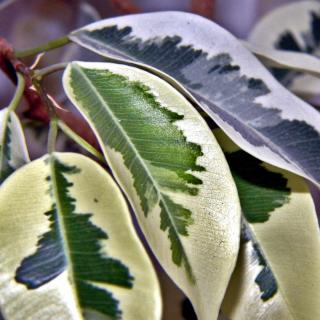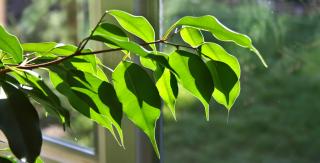

Ficus benjamina is certainly one of the favorite plants all around, and deserves to be taken care of diligently.
Basic Ficus benjamina facts
Name – Ficus benjamina
Family – Moraceae (mulberry family)
Type – air-purifying indoor plant
Height – 10 feet (3 meters) indoors, 100 feet (30 meters) outdoors
Soil – indoor plant soil mix
Exposure – bright light but no direct sunlight
Foliage – evergreen
Here are our tips on growing a nice ficus tree and avoid diseases.

Ficus is only picky as regards its exposure, its watering and must be guarded against rapid changes in temperature.
After having purchased your ficus tree, it is often preferable to repot it immediately.
You’ll have to repot your ficus tree every 2 or 3 years when the pot grows too small. Here is a video on how to repot your ficus tree.
Ficus trees are vulnerable to mistakes made while growing it, and to certain insects and parasites. Here are the main mistakes that must be avoided and how to treat a diseased ficus tree.
Quite common for ficus trees, this is normal as long as the loss is regular and not too many leaves are falling.
If your ficus lost its leaves, check that it is well watered, and eventually proceed to topdress the pot.
It should quickly bounce back more vigorous than ever.
This is often caused by a mite attack.
This is usually due to mealybugs or scale insects. The ficus tree’s leaves are covered in sticky white blobs.
These are whiteflies. Shower off your ficus in the bathroom, that should solve the problem.
But if you can’t move your ficus around easily, spray water on the leaves once or twice a day until the whiteflies disappear.

Consequently, water on average once a week.
If the air indoors is quite dry or if it is summertime, it’s possible to water more often, but always wait for the soil to have dried up in the surface layer.
Of course, in winter or if surrounding moisture levels are high, you may space the watering somewhat.
Feel free however to mist the leaves on a regular basis, this will increase leafage quality and keep the leaves from drying up.
Many seem to say that Ficus trees hate pruning; actually, the opposite is true: ficus bears pruning very well. If it has grown too tall, or has invaded your living room, simply prune the ficus tree.
Reach for your hand pruner and follow our advice:
This Ficus is the most common indoor shrub.

The term Ficus means fig and there are over 800 different species that have evolved into different shapes. Some of them remain small shrubs, some of them turn into huge trees. Still others grow to something similar to vines!
Across the planet, about two dozen varieties are available for sale for indoor use. The most common and famous of these is Ficus benjamina. But also interesting is Ficus elastica, known under the name rubber ficus and also Ficus retusa, often grown as a small ficus bonsai.
With a pot or garden box and regular topdressing, your Ficus benjamina can grow to reach a magnificent 6 to 10 feet (2 to 3 meters) tall!
Read also:
My Benjamin’s ficus is about 40yrs old,but now it has really sticky leaves what to do please
Hi Barbara, that’s a nice age for a Ficus! Sticky leaves almost always point to either of two culprits: scale insects or aphids. Both secrete honeydew, which is what usually makes the leaves sticky. Follow the links to those pages to check whether that’s the issue with your ficus or not. If not, feel free to post a few pictures on our forum, you’re sure to get knowledgeable answers there, too.
You can also clean the leaves that seem dirtiest. Use a damp cloth with lightly soapy water for that. Easiest is if you can bring it outside for a gentle hose-down. Use only little water, since too much of it would blast leaves away or hurt them if the temperature difference is too high (tap water is notoriously colder than ambient air).